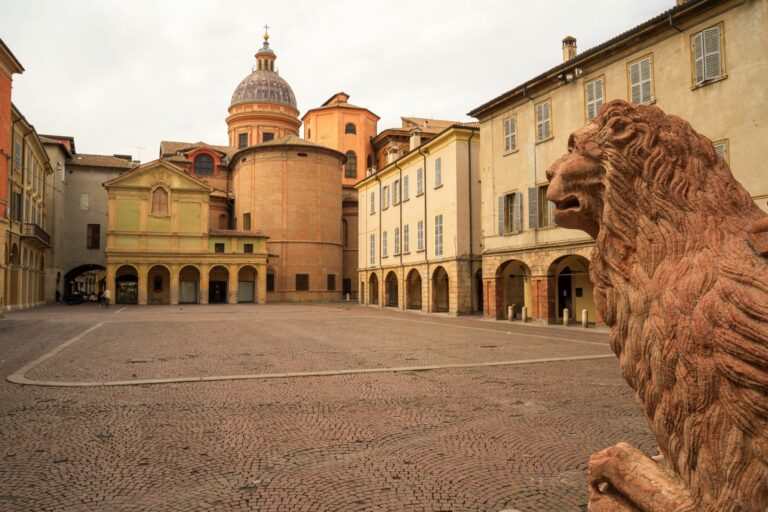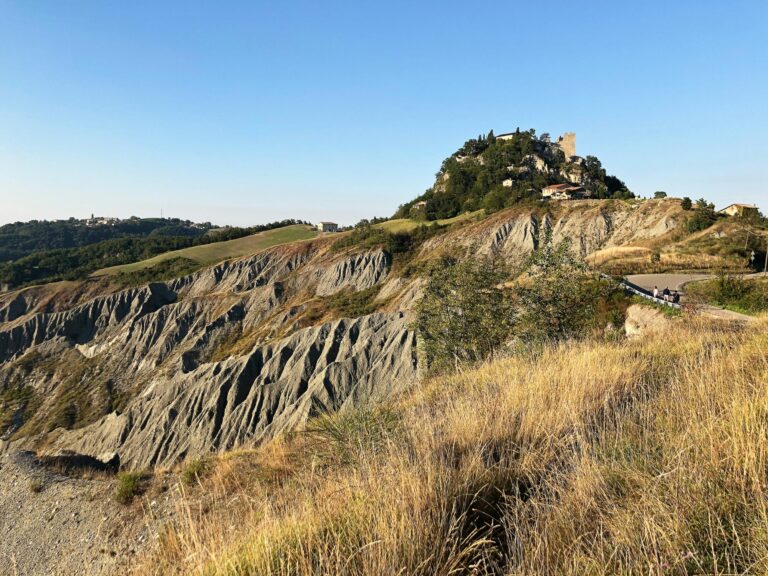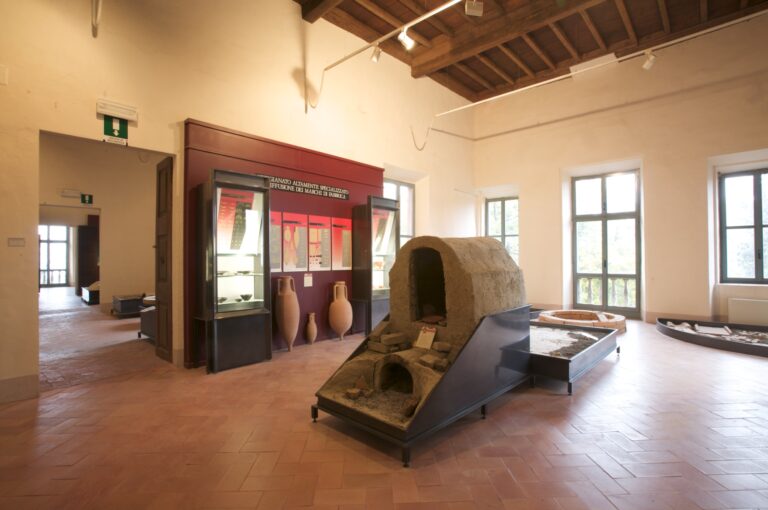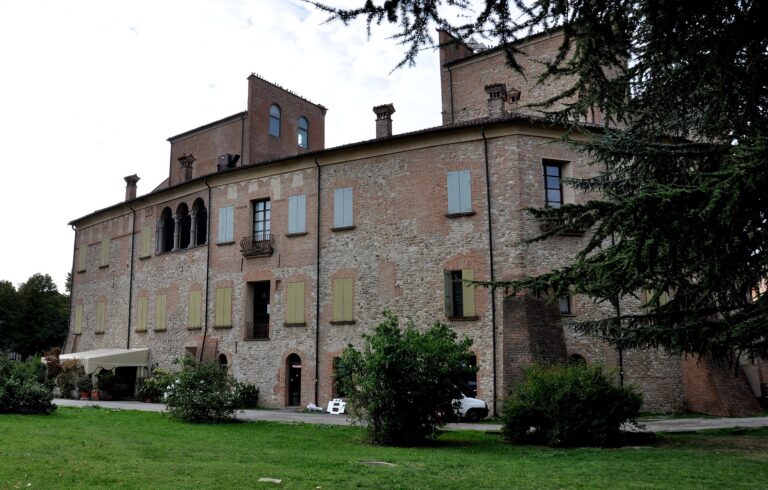Located just over 35 kilometres from our agriturismo, Parma is not only a city of culture, theatre and music, but also a UNESCO Creative City for Gastronomy and the capital of the Food Valley. As for things to see, there is no shortage of them. For those with little time, here is a one-day itinerary to discover the most significant monuments in the centre.
The itinerary starts from Piazza Duomo, the religious centre of the city, which preserves its medieval atmosphere intact. Here stands the most important place of worship in Parma, the Cathedral of Santa Maria Assunta. Built starting in 1074 following a fire that destroyed the previous early Christian basilica, it was consecrated in 1106. A remarkable example of Romanesque architecture, it features a splendid façade with a gabled roof. Inside, one can admire valuable works of art, including the dome frescoed by Correggio with The Assumption of the Virgin (one of the masterpieces of 16th-century Italian art) and the slab of the Deposition by Benedetto Antelami on the wall of the right transept.
The second stop on the itinerary is the majestic Baptistery of St John the Baptist, also located in Piazza Duomo. A symbol of the transition from late Romanesque to Gothic, the building, as stated on an inscription on the architrave of the north portal, was built starting in 1196 (and finished in the following century) to a design by Antelami. Octagonal in shape, it stands tall and is clad in precious pink Verona marble. The interior features frescoes covering the dome, created in the 13th century by craftsmen from the Po Valley influenced by Byzantine iconographic models, and high-relief sculptures depicting the months and seasons of the year, largely due to Antelami.
From Piazza Duomo, walking past the cathedral and continuing further on, one finds oneself in front of the Church of San Giovanni Evangelista, rebuilt in Renaissance style after a fire at the end of the 15th century. To its right rises the bell tower, which, at 75 metres high, is the tallest in Parma. Among the works of art in it are the cycle of frescoes by Correggio decorating the dome and the interesting early works by Parmigianino. Next to the church is the Monastery of San Giovanni (well worth a visit) with its three cloisters (the first with Ionic columns, the second with frescoes by Correggio and the third with 16th-century frescoes) and the Monastic Library, magnificently frescoed.
On the way back to Palazzo Pilotta we pass the St. Paul’s Chamber (or Abbess’s Room), one of the rooms of the private flat of Abbess Giovanna da Piacenza in the former Monastery of San Paolo. Considered one of the masterpieces of the mature Italian Renaissance, it was frescoed in 1518-1519 by Correggio. The decoration focuses on the theme of the goddess Diana and philosophical-mythological correspondences. Another room frescoed by Parma painter Alessandro Araldi is also included in the visit.
Turning left onto Strada Giuseppe Garibaldi, one reaches the Basilica of Santa Maria della Steccata, whose name derives from a wooden fence that protected a 14th-century painting of a nursing Madonna, venerated by crowds of the faithful. The church proper was erected between 1521 and 1539 by Bernardino and Giovanni Francesco Zaccagni, with the contribution of Antonio da Sangallo il Giovane in the design of the dome. The interior is decorated with 17th-century frescoes of the Parma school. The entire pictorial decoration was entrusted to Parmigianino, but he was only able to create the intimist frescoes of the Three Sage Virgins and the Three Foolish Virgins on the presbytery archway. The basilica is also home to the Museo Costantiniano della Steccata.
Finally, the last stop on the itinerary is the nearby Piazza Garibaldi, the vital heart of the city. Opened on the site of the Roman forum, then enlarged between the 13th and 14th centuries, it has an uneven appearance due to some modern additions. Today, with its open-air tables, nearby pedestrian streets and elegant shops, it is the true living room of the Parmesans.



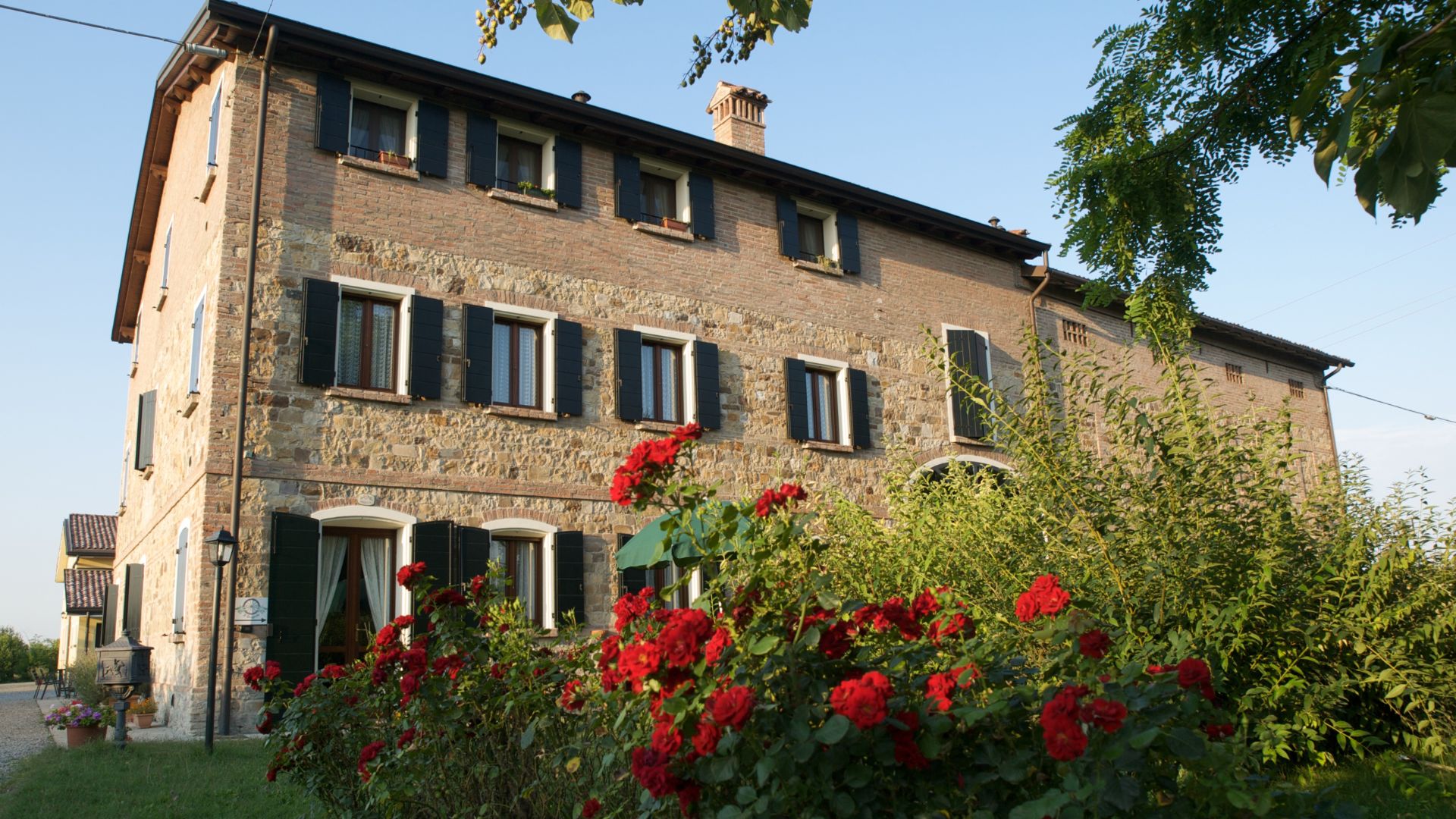
AGRITURISMO IL BRUGNOLO
Welcome to il Brugnolo
If you’re looking for completely independent apartments surrounded by greenery you really are in the right place here!
In fact, Brugnolo is immersed in the green nature of the Emilian countryside. For your relaxation, for that of your children, and again for the runs of your 4-legged friends, you will have 6000 square meters of park at your disposal!


